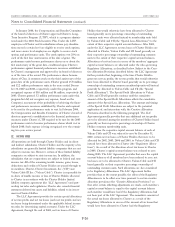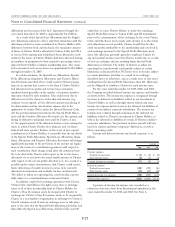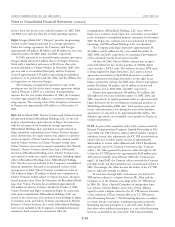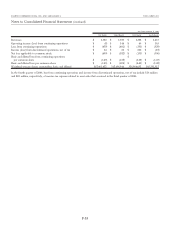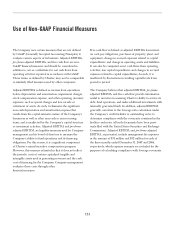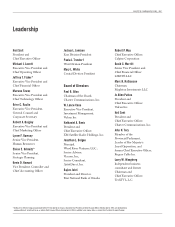Charter 2007 Annual Report Download - page 114
Download and view the complete annual report
Please find page 114 of the 2007 Charter annual report below. You can navigate through the pages in the report by either clicking on the pages listed below, or by using the keyword search tool below to find specific information within the annual report.
114
Use of Non-GAAP Financial Measures
The Company uses certain measures that are not defined
by GAAP (Generally Accepted Accounting Principles) to
evaluate various aspects of its business. Adjusted EBITDA,
pro forma adjusted EBITDA, and free cash flow are non-
GAAP financial measures and should be considered in
addition to, not as a substitute for, net cash flows from
operating activities reported in accordance with GAAP.
These terms, as defined by Charter, may not be comparable
to similarly titled measures used by other companies.
Adjusted EBITDA is defined as income from operations
before depreciation and amortization, impairment charges,
stock compensation expense, and other operating (income)
expenses, such as special charges and loss on sale or
retirement of assets. As such, it eliminates the significant
non-cash depreciation and amortization expense that
results from the capital-intensive nature of the Company’s
businesses as well as other non-cash or non-recurring
items, and is unaffected by the Company’s capital structure
or investment activities. Adjusted EBITDA and pro forma
adjusted EBITDA are liquidity measures used by Company
management and its board of directors to measure the
Company’s ability to fund operations and its financing
obligations. For this reason, it is a significant component
of Charter’s annual incentive compensation program.
However, this measure is limited in that it does not reflect
the periodic costs of certain capitalized tangible and
intangible assets used in generating revenues and the cash
cost of financing for the Company. Company management
evaluates these costs through other
financial measures.
Free cash flow is defined as adjusted EBITDA less interest
on cash pay obligations; purchases of property, plant, and
equipment; change in accrued expenses related to capital
expenditures; and change in operating assets and liabilities.
It can also be computed as net cash flows from operating
activities, less capital expenditures and changes in accrued
expenses related to capital expenditures. As such, it is
unaffected by fluctuations in working capital levels from
period to period.
The Company believes that adjusted EBITDA, pro forma
adjusted EBITDA, and free cash flow provide information
useful to investors in assessing Charter’s ability to service its
debt, fund operations, and make additional investments with
internally generated funds. In addition, adjusted EBITDA
generally correlates to the leverage ratio calculation under
the Company’s credit facilities or outstanding notes to
determine compliance with the covenants contained in the
facilities and notes (all such documents have been previ-
ously filed with the United States Securities and Exchange
Commission). Adjusted EBITDA and pro forma adjusted
EBITDA, as presented, include management fee expenses
in the amount of $31 million and $32 million for each of
the three months ended December 31, 2007 and 2006,
respectively, which expense amounts are excluded for the
purposes of calculating compliance with leverage covenants.


